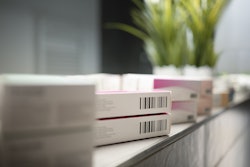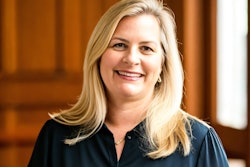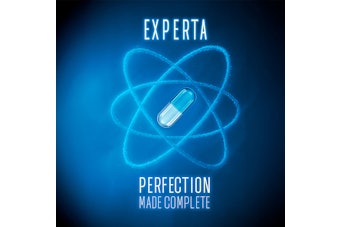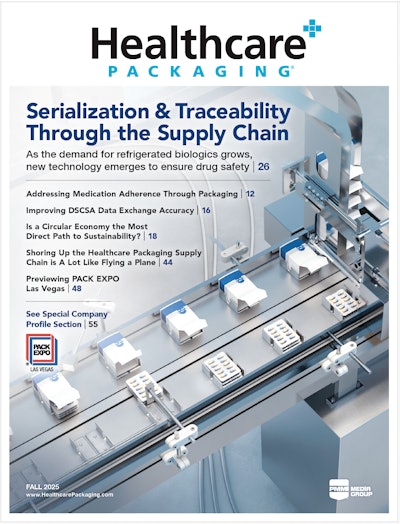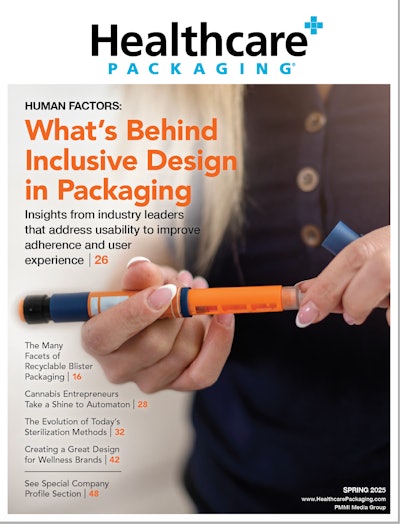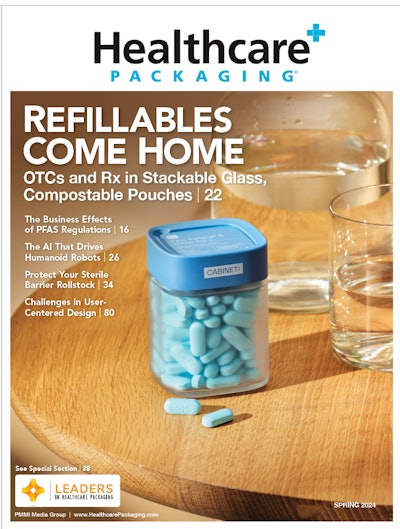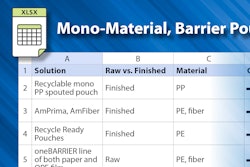Liz Cuneo: I am here with Jordan Diatlo, founder, CEO, and creative director of Leadoff Studio, and Dr. Zach Gelber, co-founder of Babsy. Hello, thank you for joining me.
Jordan Diatlo: Thanks for having us.
Cuneo: Babsy is a really cool brand, and I wanted to kind of talk about the design behind it, the goals behind it. So, we'll kick off our interview with a question probably for both of you, but maybe we'll start with Zach. What were the key design goals when developing Babsy's brand identity? And actually, you can start with the why Babsy in the first place.
Dr. Zach Gelber: Sure, yes, so, my co-founder, Dr. Dante and I met each other during our residency and, kept in touch after as we went on to separate jobs and just working in the field of pediatric dentistry and we would catch up every, maybe like once every couple weeks and just go over things that we'd seen in in the field and just run ideas off of each other. And one day, I think we just started talking about, patient motivation. The common question that we both were getting on our end was, you know, from parents asking how do we get our kids to be motivated to brush their teeth? How do we get them to want to brush their teeth? It's always a battle and you know, we honestly saw it across all ages, whether the children were 2, 4, 6, 8, it didn't really matter what age it was a common question and a common problem that parents were having.
So, we used our expertise in the field, the fact that we saw children every day, we saw things like crocs with gibbets on them and just different shirts that were customized, and we just said like, how can we get them to be motivated, and we felt like putting the power in their hands, making it a constructive experience where they get to, you know, work together with the product. It was just something that kind of came, you know, at the snap of a finger. We want kids to feel like they were in charge of the moment instead of it being a chore where parents are telling you, hey, go brush your teeth. It was like, let's build this together and let's get this going together so we can then use what we built to, to work together and make sure that we have those healthy smiles.
So, we, met Jordan through a mutual friend and from the day that we knew that he and his team at Leadoff really understood, our goals and our aspirations for what the main purpose of what we were trying to accomplish was and it was like Jordan said earlier, you know, a collaborative process in terms of getting everything off the ground in terms of where we want it to be.
Diatlo: Yeah, I think, you know, one moment that always stood out to me when I was meeting Dr. Zach and Dr. Dante, they said parents are asking them at every visit what toothbrush to buy their kids, and that I felt like was just such a powerful moment where they were expecting. You know, this souped-up tech savvy device and Zach and Dante said we just need them to brush their teeth. That's all. What toothbrush brush gets them to brush their teeth. So, like Zach said, How do we get the kids to get motivated to brush their teeth?
And kind of in developing the product and the brand we're always thinking about that duality of how do we appeal to kids but also make sure that parents know this is a great product, it's backed by dentists, it's invented by dentists, you know, we're really putting it out there for the children and the adults.
Cuneo: Yeah, and in fact, that was one of my questions- how do you balance the educational playful aspects of the brand to appeal to kids, but then also, you know, give parents that comfort and knowledge that like we're still, this is the toothbrush and it's going to work and you know, it's still a serious product. So how do you balance the education and then the playful side.
Gelber: I think from day one we really wanted to make it an intuitive product. We wanted, and especially with the packaging as well, when we were coming up with our sketches and designs or just even as communicating to the Leadoff team what we felt it should look like, it was, we wanted it to be something that the second you open the box, kids know what it is and are wanting to take it out of the box and start using it right away. So intuition was an important factor for us and as Jordan said, you know, I think being created by two pediatric dentists, I think that it also adds a little bit of the, the side of like this is not only something fun, but also something that's useful and, and effective in terms of, of getting our goals accomplished.
Diatlo: Yeah. When, when we developed the brand, I know it was super important to the Batsy team that we have a badge or something that really calls out, created by dentists. So, and this is the packaging for one of the starter kits, and we made sure the outside is supposed to feel like, you know, the whole brand feels like this arts and crafts explosion. So, the outside is purposely cardboard with just white images to channel your imagination. But then that sticker right there created by dentists. So this way the parents know that, oh, OK, before my kids open this super colorful thing and start playing with what looks like a toy, actually there's some science here, there's some real thought that's put into this by actual professionals.
Cuneo: Yeah, that's perfect. So, I guess, can we talk a little bit about the arts and crafts feel? You said that's what the box is supposed to feel like. Was there an element of like, you know, unboxing, you know how there's such an experience these days with, with packaging, so what was the goal with the box?
Diatlo: Oh, big time, absolutely. So, I mean, the product itself, once the kids get going, I just have a bunch of samples here. And the way we designed it, all the colors match and look nice together, but it really is this kind of explosion of all these colors, all these shapes, all these different graphics, so much going on.
We wanted to have this one brief moment of clarity where the kid opens the box. And it's this really nicely organized kit at the bottom that lays out all of the parts. So when they open it before they go nuts, they can actually see like, OK, I got all of these things right here. There's a toothbrush head, so it's obvious what it is. And then the kind of the spine of the product, the, we call it the threaded rod, it's really based on like almost an infant's cognitive toy that they use to learn how to use their hands and their eye hand coordination. That's something that's instantly recognizable to little kids, especially. So, they can take that out and know what to do.
And then they, I mean, by the time they're getting here, they're ripping this to shreds and pulling all this out. So we love to have this moment of organization and just this, it's almost where you take stock of, oh, OK, I have these 8 different parts. This is what I have. And then they rip it out and, you know as a parent, I'm sure you guys know. Little toys all over the floor, but that is, hey, I'll step on them if my kids are actually brushing their teeth. That's, that's the trade-off there.
Cuneo: Yeah, absolutely. I know online I saw that there's instructions. I don't know if you have them handy to, but the instructions are drawn out, right, instead of text heavy, you know, so kids can read or see them?
Diatlo: Exactly. That was a big part of it was just, OK, here's how you put it together, really simple, like 123. Of course there's text also so the parents can see and go to a deeper level. But even when we're designing things with text, we want to make sure there's a hierarchy of what you're looking at. So, off the bat, you're going to notice all the images and it's really easy to follow with those arrows. OK, these are going on here, here, done. If you want to go a step further, you can read the headlines, and if you want to go even further, you can read the text below, but it's supposed to be easy enough and intuitive that even a 3-year old can do it.
Cuneo: So what makes the children's healthcare segment so different than adult healthcare segment in terms of design or, you know, functionality? I'm sure there's different goals, with both.
Diatlo: 100%. So, in the adult world, if Zach tells you to brush your teeth, you're probably gonna listen. and in the kids' world, if Zach tells you to brush your teeth, Zach, does it work?
Gelber: Not, not usually, no. That's why we're here today.
Diatlo: So, when, Zach and Dante came to us, they did have this idea for a build a brush, where there would be a few parts that the kid puts together. They didn't totally know what that would look like or how many parts or how they put it together, but they did have this idea that if the kid puts it together, they're going to be naturally invested in using the tool, which I thought was great. I mean, I have a 9-year-old and a 6-year-old at the time. This was about 3 years ago when we started, so especially for my 3-year old thinking, OK, yeah, he's starting to play with Legos.
I'm watching the confidence build every time he puts it together, and I was even noticing that he was taking it apart and putting it back together, taking it apart, putting it back together. So, I thought that insight was spot on. And then from there we're really trying to just look at, OK, in order to increase the efficacy of somebody using this tool, what are their deeper motivations?
So for the kid, we really tapped into that confidence building, being able to use this, so making it really easy to spin these on and off, like that, so really figuring out the exact tolerances. You know, even something so subtle, like, there's this little bevel on the edge here. So, I was testing this with my 3-year-old son to make sure that he had the dexterity to do this while we were developing it. And I was sending 3D prints over to Zach and Dante and they were using it with their kids. So that was one thing, being able to take them on and off really easily and having that self-confidence and satisfaction of building it yourself.
I think the other major thing that we're tapping into with children is there this evolving sense of self-identity and trying to figure out who they are in the world. I know that's such a deep thought to have for a toothbrush, but really like you know, one day my daughter has a Frozen toothbrush, the next day she hates all the princess stuff and she's over it, and she doesn't want anything in that world, and I think with Babsy... The way we did this, when we were developing it, my son loved pizza, and I want this on record because he's going to regret this. Now he says he hates pizza. So he would take this bit off, I think having that ability to put all of these pieces together and you know, for someone to be able to say, you know, I like mermaids and ninjas and video games and fairies and have this brush be about their identity when they're figuring out who they are and what their identity is, and it's so rapidly changing, it makes it a really unique tool that they actually want to use.
So, to go back to your original question, we're trying to figure out how to increase the efficacy through actually tapping into the motivations of a child and figuring out what the child is actually driven by. In this case, the self-confidence building and the sense of their self, those are the two major things for this.
Cuneo: Yeah, and that's interesting, the idea that if the kids, you know, have the buy-in of building the toothbrush, right, it could increase adherence more than just simply buying them the Frozen toothbrush, so that's interesting, and I know, I know you guys have talked about using it with your kids, both of you and your partner, Dante. So user testing, how did that inform the final design, it sounds like there was a lot of user testing?
Gelber: Oh yeah, for sure. I think on, on all fronts. So, mine, I have two kids as well. When we started, they were younger. Now they're almost 5 and 3, but, our oldest was around 2 and a half, so we were really right on the cusp of where we thought he was going to be, and it helped us kind of form guidelines. Jordan's children are just a little bit older, so we were able to really like fine tune where we felt the product was, you know, in terms of the appropriate age for, for the product in terms of our recommendation. And in terms of just the dexterity of it all, right, like children, you know, their development grows quickly, but there are certain points where they can figure out how to put it together. That's not to say though that when we were testing my son, you know, like it wasn't a hindrance, with just a little bit of parent parental supervision.
We let him pick the pieces and put and we put them on for him, and that still gave him some power, and that was still part of the exciting process as well, But it was great because we were able to really test it in real time and see like, hey, this is something that really is exciting them, and when we would all kind of use the prototypes and reconvene and discuss how everything went, I think that, we all felt the same way, like, we really are on to something here in terms of the excitement that that all of our kids are experiencing on their own.
So it was definitely helpful to have that, you know, at home experience and I'd say also the insight as just being a parent as well. I tell patients of mine all the time or patient's parents really, you know, I go through the same struggles at home every day. I've been there in terms of those really rushed nights when the kids are tired and you really just want to get them to bed but having that experience with our kids at home was honestly, you know, priceless, truly.
Diatlo: Yeah, and through our process or our standard design process for products we were prototyping from a very early stage, and we prototyped out a couple of different user interaction type mechanisms that we had kind of concepted for this brush. I think one thing that really led to us choosing this one was just the playfulness of that threaded rod that you could kind of fidget with it constantly. I think all of us had so much fun with that, and I don't even mean the kids.
I mean like the Leadoff studio team over here and the Babsy team. Just the ability to kind of like send that back and forth was so addictive and fun that we kind of felt like that was a strong direction.
I'll say for me, the moment where I knew that we had a really cool product, I brought home some just plain white 3D prints. They were the shapes, they had the rod, but nothing fun. Certainly no like faces or rainbows, just all plain white. And I gave my kids a bag of them, and really it was just to see like, could they do it? Was it a good size? And they were fighting over these 3D prints. So, and they're not the kind of kids or siblings who like are at each other's throats constantly or anything like that.
But when, when I gave them, it was like 2 or 3 sets of them, they were fighting over like which bits they would have, who could play with it first, like there's plenty to go around. But seeing that in action it's like, wow, the kids actually really like this. So it was actually a moment of satisfaction, of course, but knowing that not only could they do it, but they really enjoyed using it and playing with it and that it went beyond being a toothbrush that they could build this thing, to their own liking again, even with just plain white, having that excitement was really cool.
Cuneo: That's cool. Were there any unique challenges in creating packaging that encourages kids to interact and personalize with their toothbrush? I'm sure there was a challenge somewhere.
Diatlo: Yeah, I think one challenge and maybe it's a challenge that we gave ourselves, both Leadoff and Babsy, but creating a standardized box that would fit all of these different bits when we have these expansion packs. So, you know, for example, this one has the sphere shape, the cylinder shape, and the spiral shape, has different graphics inside, so it appeals to a different customer. That was, that was first of all a challenge just figuring out the manufacturing.
Of how do we manufacture all of these different bits in all of these different colors with a limited budget for the tooling because we grouped all these into different molds, so it's not just one mold for one part, it's one mold for let's say a bunch of parts, but figuring out how to mold them and put them into the right merchandise packs together with all of these different colors, that was certainly a challenge. And then standardizing the box for it. So some of these have, you know, the spirals are larger than some of the others, and some of these bits have ears, some of them have, little feet. So getting all these to fit inside the same box, I think that was a little bit of a challenge. What we ended up doing here though. To standardize it, each one has basically its own little insert that helps it fit perfectly inside the box. There's a lot standardized on here, which, you know, I think it's a testament to the Leadoff team over here creating a system that could be scaled up even beyond what Babsy's launching with something that they can come out with new refill packs, change up the colors, just a little bit of artwork.
Cuneo: That's awesome. And right now, is the product available in stores or is it just online or both?
Gelber: Yeah, currently just direct to consumer through our website and other sales channels like TikTok Shop and other places that we've been putting up advertisements and stuff like that. but, you know, with the eventual idea to hopefully be in some retail stores and, and open to whether it's small-town boutiques or, or larger, you know, nationwide stores, it's always going to be part of our strategy moving forward for sure.
Cuneo: OK. So, you know, for either of you, how does this project reflect the growing trend toward personalization and consumer healthcare products? I mean, we see personalization even in pharmaceuticals, med devices it seems like that's what people want, that personalized experience. So, how does this project reflect that?
Gelber: Yeah, I mean, I'll start and let Jordan chime in, but I think that just was part of our early mood boards motivations, really. I mean, from, you know, Dr. Dante and I've experienced in our offices seeing kids with casts come in that have whatever they want on them or like I said, crocs were a big inspiration in terms of changing the gibbets, but, also other consumer products, I mean, customized makeup bags that my, you know, my wife Marissa, who's part of our team has and, I think that there's a big trend in that, and I think that, like Jordan said, self-expression was a really big thing that we wanted to touch upon, not only because I think children take a lot of pride in what they're interested in, but also just the ever-changing things that kids are into, right?
Like Jordan said, like one day, 3 years ago, his, you know, his son was into pizza, and now all of a sudden he's not. But I think that that was, never lost upon the team really. Like, my kids are. Same way, it's like one day they're wearing a shirt of one character and two days later they've never heard of that character anymore. So, it was always going to be that, I mean that from day one that was part of our early motivations was to try to tap into that.
Diatlo: Yeah, I think just as time goes on, more healthcare solutions are being more and more accessible at home. So speaking of a larger healthcare industry, I think a lot of it is moving toward at-home care wellness as a giant trend, which is kind of pulling healthcare into more of a consumer territory and just as things come home, people want it to be a reflection of themselves and how they want to live. You know, if it's something that's in the hospital, again, if you're an adult and a doctor is telling you to do something, you'll do it.
But once it comes home, now you need that extra sense of motivation to actually do something. So how is something styled or functionally figured out to make sense in your bedroom or in your bathroom at home or even in your living room? There's, there's so much that is now in the home, and I think that's kind of where that trend, maybe like that's, I don't know if it's chicken or egg, which one's shaping which, but I do think that that's an important thing that's kind of coalescing with that trend, to the individuality of products.
Cuneo: Yeah, I agree. There's a lot of customization now and like you said, empowering kind of the industry right now, so that's interesting. It's cool to see it reflected in the children's toothbrush. So, thank you both for your time today.





